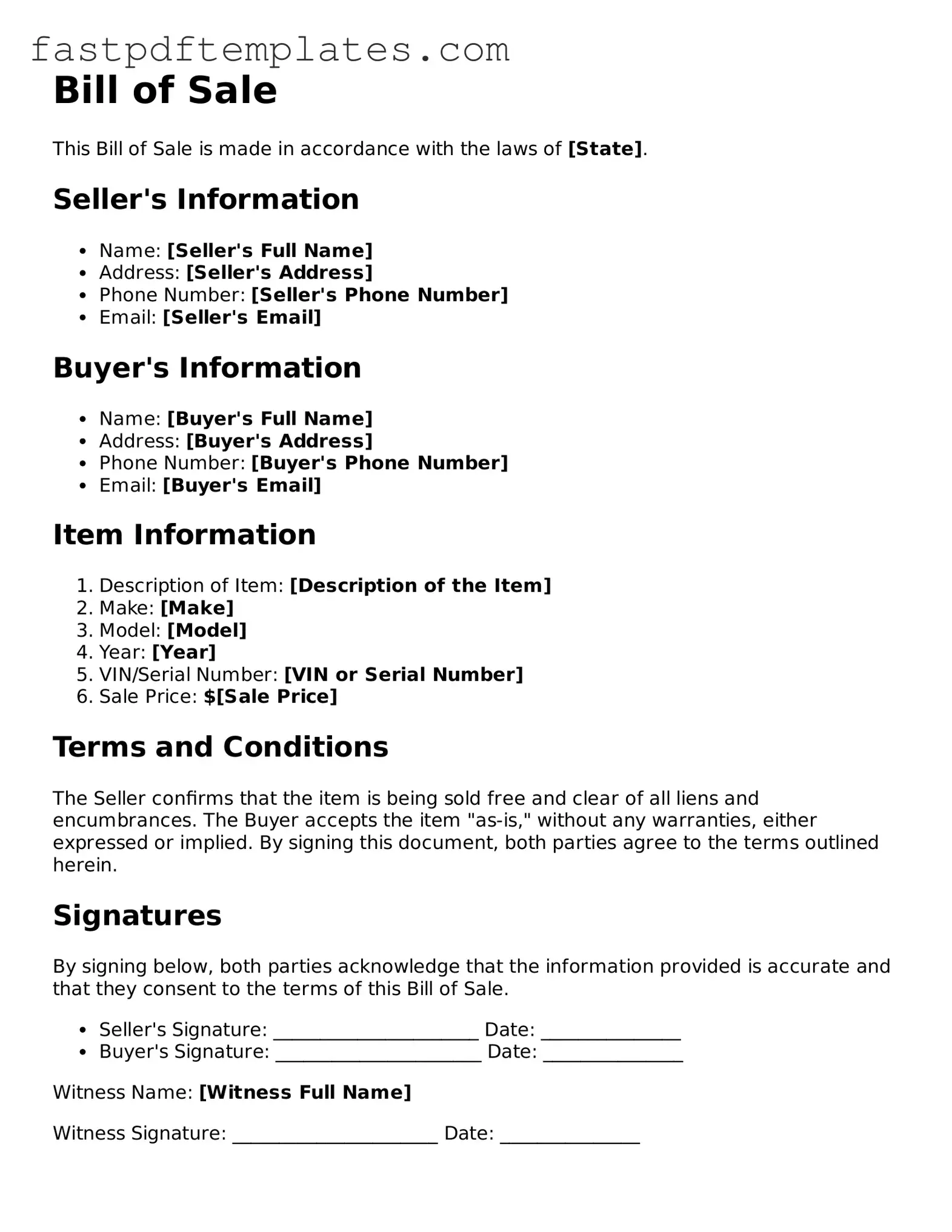Bill of Sale
This Bill of Sale is made in accordance with the laws of [State].
Seller's Information
- Name: [Seller's Full Name]
- Address: [Seller's Address]
- Phone Number: [Seller's Phone Number]
- Email: [Seller's Email]
Buyer's Information
- Name: [Buyer's Full Name]
- Address: [Buyer's Address]
- Phone Number: [Buyer's Phone Number]
- Email: [Buyer's Email]
Item Information
- Description of Item: [Description of the Item]
- Make: [Make]
- Model: [Model]
- Year: [Year]
- VIN/Serial Number: [VIN or Serial Number]
- Sale Price: $[Sale Price]
Terms and Conditions
The Seller confirms that the item is being sold free and clear of all liens and encumbrances. The Buyer accepts the item "as-is," without any warranties, either expressed or implied. By signing this document, both parties agree to the terms outlined herein.
Signatures
By signing below, both parties acknowledge that the information provided is accurate and that they consent to the terms of this Bill of Sale.
- Seller's Signature: ______________________ Date: _______________
- Buyer's Signature: ______________________ Date: _______________
Witness Name: [Witness Full Name]
Witness Signature: ______________________ Date: _______________
